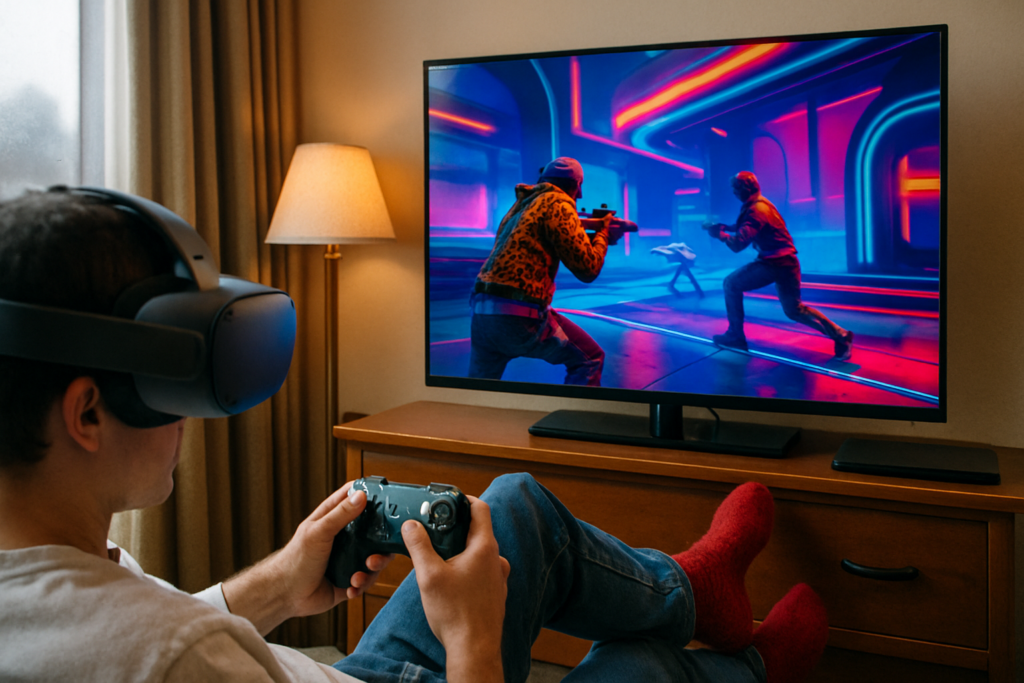Accessibility and Global Reach
In 2026, one of the biggest reasons esports is outpacing traditional sports is pure accessibility. Unlike legacy sports, which often require formal training, infrastructure, and regional inclusion, esports can be accessed by anyone, anywhere, with just a device and an internet connection.
The Internet Levels the Playing Field
Low barrier to entry: Anyone with a smartphone, console, or PC can join the global gaming scene—either as a viewer or a participant.
Global communities: Live streams, online forums, and social platforms allow fans from all backgrounds to engage instantly.
No geographic limits: Esports tournaments aren’t restricted to local markets or regional circuits—any fan can tune in live from anywhere in the world.
Mobile Gaming’s Role in Emerging Markets
Mobile gaming is a powerhouse, especially in regions where PCs or consoles are less affordable or unavailable. In places like Southeast Asia, South America, and parts of Africa:
Smartphones are the primary gaming device
Games like Free Fire, PUBG Mobile, and Mobile Legends have massive followings
Mobile-friendly platforms drive hundreds of millions of views
These regions are redefining the esports map, turning markets once overlooked by traditional broadcasters into thriving digital fanbases.
Open Tournaments vs. Gatekeeping
Traditional sports often have high walls of entry—athletes need to attend elite schools, join expensive clubs, or be scouted early. Esports flips that model:
Anyone can rise through open qualifiers, ranked ladders, and community tournaments
Fans can follow a player’s entire grassroots journey online
Talent emerges from every corner—not just wealthy, developed regions
Esports gives power to the players and makes fandom broader, more inclusive, and far more global than many conventional sporting models.
Introduction: A New Era of Competition
It’s official—esports isn’t just catching up to traditional sports. In many parts of the world, it’s already passed them. Baseball, hockey, even football are losing screen time to League of Legends finals and Valorant championships. In 2026, esports isn’t niche anymore; it’s mainstream, globally and financially.
So what’s fueling this shift? A few things. First, the generational handoff. Gen Z and Gen Alpha grew up in digital ecosystems, not stadiums. They want content fast, interactive, and on-demand—and esports delivers. Then there’s accessibility. You don’t need cable, a $100 ticket, or even a team in your city to follow the action. A smartphone and a Wi-Fi signal are enough. Toss in a wave of tech adoption—5G, cloud gaming, VR spectating—and you’ve got an industry built to scale quickly, globally, and constantly.
For a closer look at what’s pushing esports over the edge in 2026, check out Why 2026 Could Be the Biggest Year in Esports.
Gen Z and Alpha Are Tuning In—and Staying

This isn’t just a phase. Generations raised on swipes, streams, and instant feedback are shaping the future of fandom—and they’re choosing esports. Gen Z and Gen Alpha don’t just consume digital content; they live in it. For them, the idea of passively watching a three-hour game with commercial breaks feels outdated. They want action, chat, reaction—all at once.
Twitch, YouTube Live, and Kick aren’t just video platforms now. They’re digital arenas, full of creators interacting in real-time with audiences who expect a voice in the experience. Whether it’s a streamer responding to chat mid-match or a live tournament featuring dynamic camera angles and interactive overlays, the viewer isn’t a spectator—they’re part of the show.
Traditional sports broadcasts can’t compete with that level of immediacy. The new generation wants speed, feedback, and personality. Esports delivers all three—and it keeps evolving with the audience, not behind them.
Star Power and Storytelling
Esports isn’t just about fast reflexes and flashy plays—it’s driven by personalities. Top streamers and competitive pros have carved out personal brands that rival traditional celebrities. They’re not backed by institutions or polished by PR teams. They stream raw, talk to chat, and let their communities in, day after day. Viewers don’t just watch them for skill—they follow them for story.
And those stories pack emotional weight. Underdogs rising through open qualifiers. Long-time rivals trading victories across seasons. The player who walked away and came back stronger. These arcs unfold in real time, and fans don’t have to wait for ESPN to break it down. They’re living it live on Twitch, YouTube, or Kick. That immediacy creates investment. You care who wins—not because it’s your city’s team, but because you’ve followed their grind from day one.
Unlike many traditional athletes, esports pros often feel like your friends. They stream from bedrooms, read your messages, and wear the same hoodie for a week. That relatability is a massive edge. When fans feel seen and heard, they stick around—and bring others with them.
For more on how this player-driven model is reshaping the industry, check out Inside the Impact: How Esports Is Transforming the Gaming Industry.
Constant Innovation over Static Formats
Esports thrives on speed. A game can blow up globally, develop a new meta within weeks, then shift again after a patch or balance update. Leagues respond fast, fans adapt faster, and the ecosystem keeps moving. Whether it’s a breakout hit like Valorant climbing the charts or an Overwatch rework stirring up pro play, there’s always something happening. The result? Viewers stay dialed in because the landscape never feels stale.
Compare that to traditional sports. Rules haven’t budged in decades. Format changes are few and far between. While the NFL debates whether a touchdown celebration is too much, esports tournaments are experimenting with team drops, open bracket chaos, or influencer show matches mid-season.
Esports listens. If fans call something boring or broken, there’s a real chance it gets fixed. Platforms tune in to chat. Publishers issue hotfixes in real time. That kind of agility is hard to match—and it’s exactly why younger viewers keep choosing esports over the older playbooks.
Conclusion: Not Just a Trend—It’s a Movement
Esports isn’t just growing—it’s reshaping the entire idea of what competition looks like in a connected world. The line between fan and player is thinner than ever. With livestream chats, Discord servers, and interactive streams, audiences don’t just watch—they co-create the experience. The modern fan doesn’t sit in a stadium seat; they’re in the match recap on Reddit, in creators’ comment sections, in early-access betas.
As for the athletes? They don’t need uniforms or million-dollar stadiums. They need reflexes, strategy, and a camera. It’s a new kind of athleticism—digital-first, high-pressure, and relentlessly public. The entertainers, too, aren’t filtered through PR departments or league approval. They’re authentic, unpredictable, and online 24/7.
Traditional sports aren’t going extinct, but they’re on borrowed nostalgia. Esports is faster, global, endlessly adaptive—and built for the next generations. As tech keeps scaling and culture keeps shifting, the gap between old-school tradition and digital-native fandom will only widen.
Whatever side you’re on, one thing is clear: the game has changed. Permanently.



